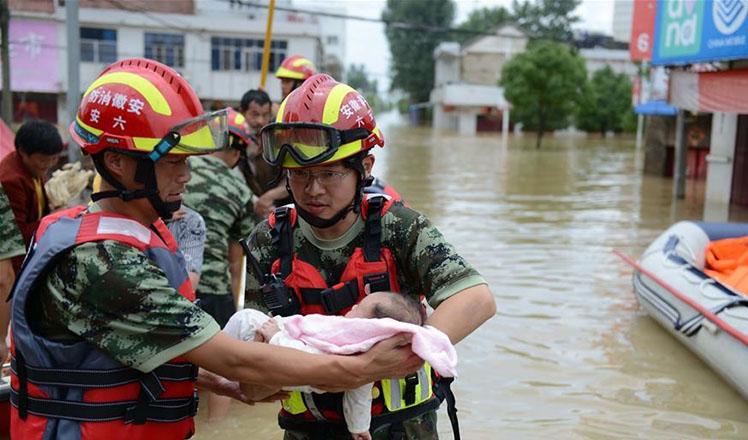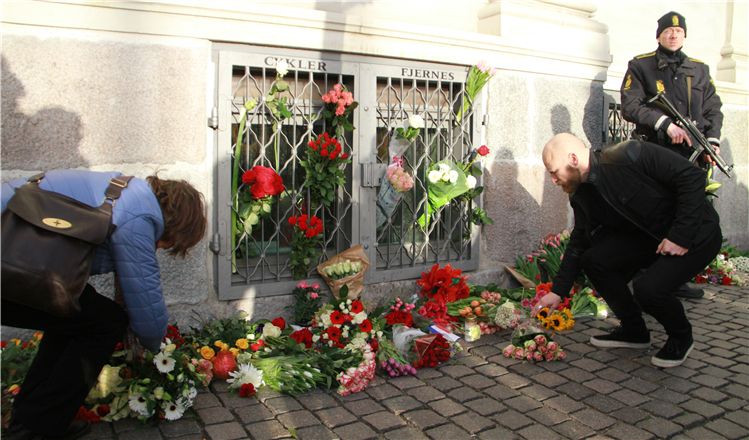China much more ready for RIMPAC
Updated: 2016-07-06 11:04
By Chen Weihua in Pearl Harbor, HI(China Daily USA)
|
||||||||
The Chinese People's Liberation Army Navy is far more prepared for the Rim of the Pacific naval exercise (RIMPAC 2016) this year than it was in 2014, the first time China participated.
"I think the staff better understood the process and understood what the planning process was and therefore was better prepared for it in 2016 than 2014," said Vice Admiral Nora Tyson, commander of the US Third Fleet, who will serve as the Combined Task Force (CTF) Commander of RIMPAC 2016.
Tyson, the first woman to lead a US Navy fleet, explained that a country is usually invited the first time as an observer and the second time to bring its ships and aircraft.
"Having participated as an observer and having participated bringing ships and aircraft, then they may be considered for a leadership position," she told the opening press conference for RIMPAC 2016 on Tuesday at the S-1 Pier of Pearl Harbor, where the participating navies are assembled.
"You don't want to push nations too early to play too big a role within the structure of the RIMPAC," said Admiral Scott Swift, commander of the US Pacific Fleet, host of this year's exercises.

A total of 26 nations, 45 ships, five submarines, more than 200 aircraft and 25,000 personnel are participating in RIMPAC 2016 in and around the Hawaiian Islands and Southern California. This year is the 25th of exercises in the series, which began in 1971. Denmark, Germany and Italy are taking part for the first time.
The PLA Navy fleet is composed of five ships, the missile destroyer Xi'an; missile frigate Hengshui; supply ship Gaoyouhu; hospital ship Peace Ark; submarine rescue vessel Changdao; three helicopters, a marine squad and a diving squad, including 1,200 officers and soldiers. The crew size is smaller only than those of the US and Canada.
During the RIMPAC 2016 (June 30 to Aug 4), the PLA Navy fleet will participate in drills including gunfire, damage control and rescue, anti-piracy, search and rescue, and diving and submarine rescue.
Wang Sheqiang, commanding officer of the Chinese fleet Taskforce 153, described RIMPAC 2016 as a pageant for the world's navies.
"China's participation this time will help strengthen the professional exchange and practical cooperation between the Chinese Navy and other navies, help enhance the friendship among the participating nations and help build a new type of military-to-military relationship between China and the United States," he said.
Wang said RIMPAC also will enhance China's capability to deal with threats in non-traditional security fields and in ensuring and promoting peace and stability in the Asia-Pacific region.
Swift dismissed the notion that at invitation to RIMPAC is a reward for a nation. He emphasized the three core elements of RIMPAC: inclusivity, continuity and place.
He said the 26 nations are joined by a shared interest in maritime cooperation in the Pacific, "where we are all locals, all locals here at RIMPAC, and that's regardless of geographic size, military might or economic strength".
Australia and Canada have been in every RIMPAC drill. Their navies are assuming some of the leadership role this time, along with the US and Japanese navies.
Swift said RIMPAC is about the place. "It's about oceans and seas that connect our navies in the Indo-Asia-Pacific region, a vast maritime theater that we are all invested in; all the 26 nations participating share a common interest in the global commons that make up the Indo-Asia-Pacific region," he said.
Tyson said the navies call on a wide range of capabilities, from disaster response and maritime security operations, to sea control and complex war fighting.
"Perhaps more importantly, participants build and sustain relations and trust that are critical to ensuring the safety of the sea lanes and security on the world's oceans," she said.
Swift said the biggest challenge for RIMPAC is going to be how to fit more ships into Pearl Harbor when more nations seek to attend. "Here is a headline I foresee in the future: Some countries are being told that they can send fewer ships," he said with a big smile.
Ted Carpenter, senior fellow of defense and foreign policy studies at the Cato Institute, said China's continued participation in the naval exercises is important. "The exercises also are critical to maintaining the operational dialogue between the Chinese and American naval commands," he said.
chenweihua@chinadailyusa.com
- Remember emerging heroes in China's floods
- Naval drill is fully within country's 'sovereign rights'
- Premier Li stresses protecting lives in flood zone
- Chinese 'Devil wears Prada' fashion maven hits social media
- Li: Ensure safety in flood areas
- Mainland informs Hong Kong on management of bookseller case
- Eid al-Fitr celebrated worldwide
- Swedish PM looking at tightening laws after festival sex attacks
- British PM race cut to 3 hopefuls as 2 contenders exit contest
- Chinese herbalists offer free US treatment
- Obama praises Hillary's judgement hours after FBI's censure
- Rio mayor tells Olympic visitors: 'Don't expect New York or London'

 Beijing Muslims mark end of Ramadan
Beijing Muslims mark end of Ramadan
 Remember emerging heroes in China's floods
Remember emerging heroes in China's floods
 Ronaldo powers Portugal into Euro 2016 final
Ronaldo powers Portugal into Euro 2016 final
 Culture Insider: Six things you may not know about Minor Heat
Culture Insider: Six things you may not know about Minor Heat
 Solar-powered visitor begins orbiting Jupiter
Solar-powered visitor begins orbiting Jupiter
 Continuous rainfalls affect millions of people across China
Continuous rainfalls affect millions of people across China
 Chinese foodies' top 10 favorite restaurants
Chinese foodies' top 10 favorite restaurants
 Chinese basketball legend Wang Zhizhi bids farewell
Chinese basketball legend Wang Zhizhi bids farewell
Most Viewed
Editor's Picks

|

|

|

|

|

|
Today's Top News
Abe's blame game reveals his policies failing to get results
Ending wildlife trafficking must be policy priority in Asia
Effects of supply-side reform take time to be seen
Chinese State Councilor Yang Jiechi to meet Kerry
Chinese stocks surge on back of MSCI rumors
Liang avoids jail in shooting death
China's finance minister addresses ratings downgrade
Duke alumni visit Chinese Embassy
US Weekly

|

|









